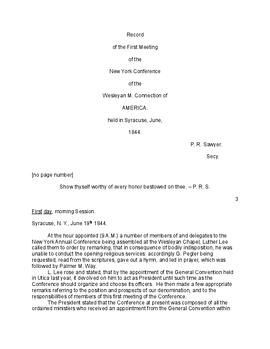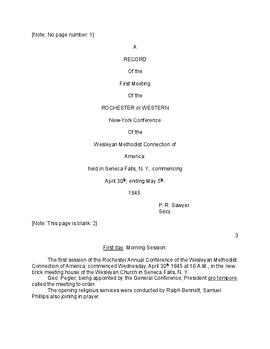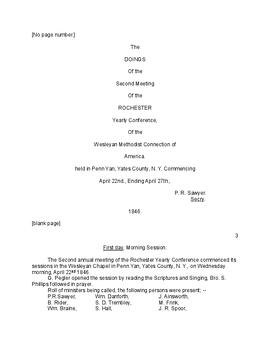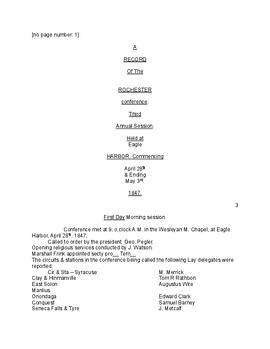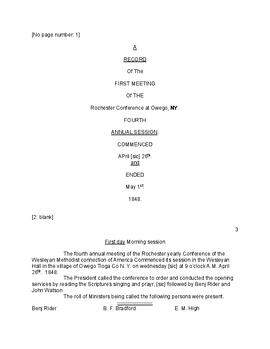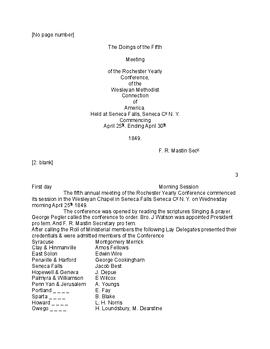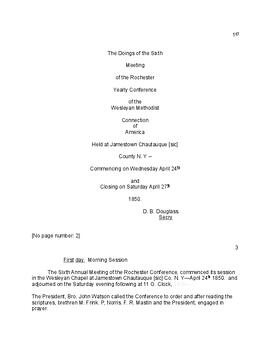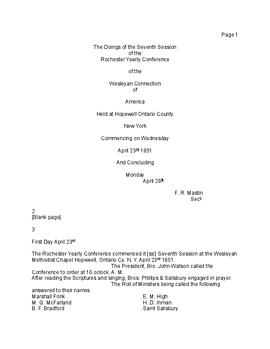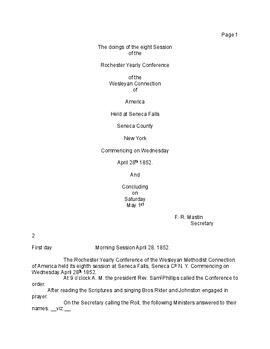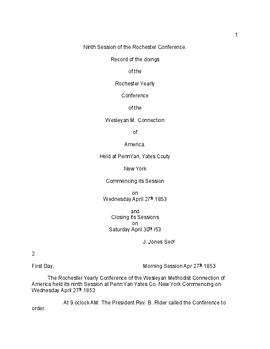Identity elements
Reference code
Name and location of repository
Level of description
Title
Date(s)
- 1845 (Creation)
Extent
1-10000
Name of creator
Administrative history
The Wesleyan Methodist Church of America emerged in response to the Methodist Episcopal Church's support of slavery and its centralized, authoritarian governance. In November 1842, leaders O. Scott, J. Horton, and L. R. Sunderland withdrew from the Methodist Episcopal Church and launched The True Wesleyan, a weekly publication explaining their reasons for separation. In December, Luther Lee and L. C. Matlack also withdrew, marking the formal beginning of the Wesleyan movement. Although earlier separations had occurred—particularly in Michigan, where a conference was established—these events laid the foundation for the official organization. The first church of the new denomination was founded in Providence, Rhode Island. In February 1843, a preliminary convention was held in Andover, Massachusetts, which led to a General Convention in Utica, New York, on May 31, 1843. There, the Wesleyan Methodist Church was officially organized and adopted a governing Discipline. The first General Conference convened in October 1844 to revise this Discipline, followed by a second in October 1848, which produced a more comprehensive and clearly organized version.
Content and structure elements
Scope and content
This series comprises records from the Rochester conference. They capture the district’s role as a vital regional hub within the wider church. The materials include minutes from district conferences, correspondence between local pastors and district leaders, reports from area churches, pastoral appointments, membership and financial statistics, and policy documents specific to the region.
These records reveal how the district guided and supported local congregations and clergy, implemented denominational policies on a regional level, and fostered church growth and ministry within the community.
System of arrangement
Conditions of access and use elements
Conditions governing access
Physical access
Technical access
Conditions governing reproduction
Languages of the material
Scripts of the material
Language and script notes
Finding aids
Acquisition and appraisal elements
Custodial history
Immediate source of acquisition
Appraisal, destruction and scheduling information
Accruals
Related materials elements
Existence and location of originals
Existence and location of copies
Related archival materials
Related descriptions
Notes element
General note
The first session was called together in Seneca Falls, New York, by Rev. George Pegler. He was elected president, with Rev. P. R. Sawyer, secretary. The membership reported was 2,513. The Rochester Conference consisted of churches in the western portion of New York. In 1911 the General Conference authorized the union of the Syracuse and Rochester Conferences under the name "Central New York and Pennsylvania." This union was accomplished at a joint meeting held at Odessa, New York, and the new name stood for a few years, but by 1915 the body revived the name Rochester Conference and thus it continued. In 1968, Rochester Conference had thirty-eight organized churches and 1,983 total membership.
General note
Rochester Conference Presidents:
George Pegler, 1845-47, 1857-58
Samuel Salisbury, 1847-48, 1870-72
Asa Warren, 1848-49
John Watson , 1849-51
Samuel Phillips, 1851-52, 1853-54
Benjamin Rider, 1852-53
M. Q. McFarland, 1854-57 , 1859-60, 1861-64
Henry Norton , 1858-59
John Johnston, 1860-61
H. B. Knight, 1864-65
Peter S. Slawson, 1865-66, 1867-70, 1874-75
J. T. Payne , 1866
D. E. Baker, 1866-67
J. L. Bush, 1872 - 73
Marshel Frink, 1873 -74
G. M . Hardy, 1875-80
A. S. Wightman, 1880-81
R. W. Padgham, 1881-83
R. E. Salisbury, 1883-85
Arthur T. Jenning s. 1885-1903
Sylvester Bedford , 1903-13
John S. Willett, 1913-20
S. D. Wilcox, 1920
Frank S. Lee, 1920-Jan. 5, 1928 , died iri office
St an ley W. Wright, 1928-33
John D. Wilcox , 1933-40
David A. Rees, 1940 -47 , 1951-67
Wesley B. Nussey, 1947-51
James E. Bence, 1967-68


